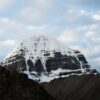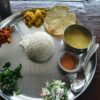Dashain: Nepal’s Biggest Festival of Togetherness
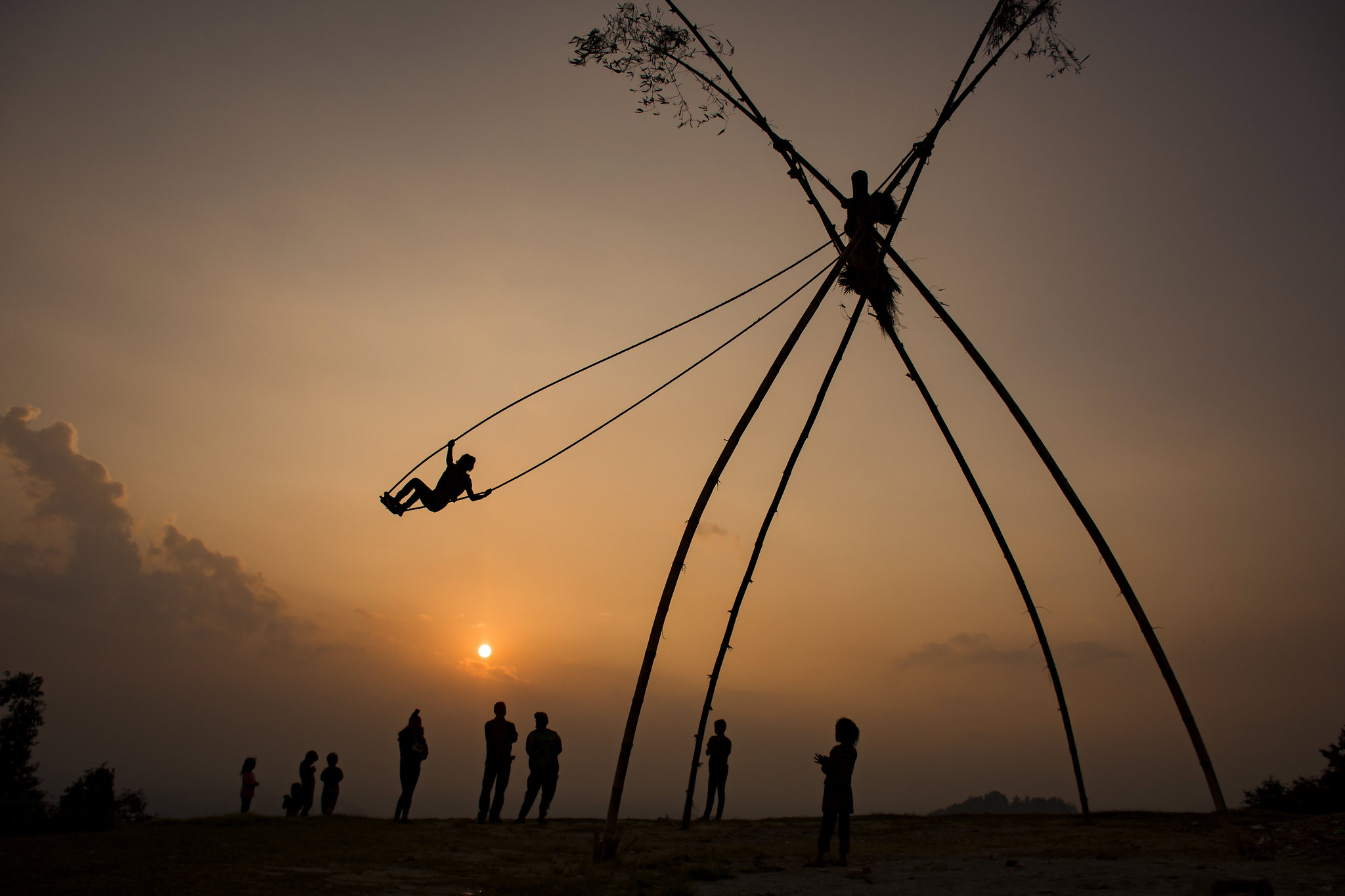
Dashain, also known as Vijaya Dashami, is not just the biggest festival in Nepal, but it is also one of the most anticipated and widely celebrated festivals in the country. This festival holds great cultural and traditional significance for the Nepalese people and is a time of reunion, feasting, blessings, and celebration.
Dashain is a Hindu festival that symbolizes the victory of good over evil. It is believed that Lord Ram, a central figure in the epic Ramayana, defeated the demon king Ravana during this time. The festival also marks the victory of the goddess Durga over the demon Mahishasura. This victory is celebrated by offering prayers, and sacrifices, and performing rituals to honor the gods and goddesses.
In this blog, we will explore the story behind the festival, its history, how it is celebrated, the cultural significance and traditions associated with it, traveling during Dashain, and how you can experience this grand festival with
The Story Behind Dashain: Celebration of Good Over Evil
Dashain is one of the most important festivals celebrated in Nepal and among the Hindu community. It is a Hindu festival that symbolizes the victory of good over evil and is celebrated with much dedication and enthusiasm. The festival lasts for 15 days and culminates on the day of Vijaya Dashami, which falls on the 10th day of the bright fortnight of the lunar month of Ashwin.
The story behind Dashain is rooted in Hindu mythology and revolves around the epic battle between Lord Ram and the demon king Ravana. According to the Hindu Ramayana, Lord Ram, an incarnation of the god Vishnu, waged a war against Ravan, the demon king of Lanka, to rescue his wife Sita who had been abducted by Ravan. After a fierce battle that lasted for 10 days, Lord Ram emerged victorious and slayed Ravan, thus symbolizing the victory of good over evil.
The festival of Dashain is a time for reflection, renewal, and celebration. It is a time to remember the triumph of righteousness over wickedness and to reaffirm our commitment to living a virtuous life. During the festival, people across Nepal gather with their families and loved ones to exchange gifts, feast on delicious food, and participate in traditional rituals and ceremonies.
One of the main rituals of Dashain is honoring the goddess Durga, representing feminine power and strength. People pray and make sacrifices to seek her blessings and protection. The festival also involves the worship of other gods like Lord Ram. In addition to the religious significance, Dashain provides an opportunity for cultural celebrations and joyous festivities.
People wear new clothes, embellish their homes with colorful lights and flowers, and join in cultural activities such as music, dance, and theater. The streets resonate with music, laughter, and excitement as people gather to celebrate unity, harmony, and love.
As Vijaya Dashami comes to an end, people partake in the Tika ritual by applying yogurt, rice, and Tika on the foreheads of younger individuals as a blessing for prosperity and longevity. This is also a time for forgiveness, reconciliation, and starting anew as people strive to let go of past grievances. During Dashain, we honor Goddess Durga for her victory over Mahishasura and Lord Ram for defeating Ravana. This festival signifies the victory of good over evil and is celebrated as a symbol of triumph.
When and How Dashain is Celebrated?
Dashain is celebrated every year in Nepal during the month of Ashwin (September-October) and lasts for 15 days. Each day of the festival holds significance and rituals are performed to honor different aspects of Hindu mythology. The first nine days, known as Navaratri, are dedicated to Goddess Durga and her different manifestations.
The tenth day, known as Vijaya Dashami, is the most important day of the festival as it symbolizes the victory of good over evil. On this day, people visit temples, receive blessings from elders, and partake in the Tika ritual.
During Dashain, families come together to celebrate by wearing new clothes, exchanging gifts, and enjoying festive meals. Kites are flown high in the sky as a symbol of freedom and victory. People also take part in animal sacrifices to honor the gods and seek their blessings.
Overall, Dashain is a time for reflection, renewal, and celebration as people come together to honor the victory of righteousness and the triumph of good over evil. The festival is celebrated with great enthusiasm and joy by the Nepalese people. Here is a short summary of how Dashain is celebrated on each of the days:
Day 1: Ghatasthapana (Planting the Sacred Jamara)
The first day of Dashain is known as Ghatasthapana, which marks the beginning of the festival. On this day, a kalash (holy water vessel) is set up and filled with holy water and cow dung. The kalash is then covered with a red and white cloth and placed on a bed of sand. The Kalash is worshiped by the family members, and prayers are offered to Goddess Durga for blessings and protection. It is a time for reflection and spiritual renewal.
A Kalash (sacred pot) filled with holy water is placed on an altar, where barley or Corn seeds are sown. These seeds grow into jamara—barley shoots symbolizing growth and prosperity. The pot is kept in a dark place to sprout Jamara over the next nine days.
Mythological Background: Ghatasthapana signifies the start of Navaratri, nine days of Durga worship. The planting of jamara represents preparation for Durga’s battle with Mahishasura, the demon who terrorized the gods.
Day 2: Dwijapanti
On the second day of Dashain, known as Dwijapanti, daily rituals and prayers are performed to Goddess Durga for protection and blessings. The family members gather together to offer prayers and offerings to the goddess, seeking her divine intervention in their lives. It is a time for reflection and introspection as individuals connect with their spiritual beliefs and seek guidance from the
powerful goddess.
Day 3: Tritiya
On Tritiya, the third day of Dashain, families continue the worship of Durga by performing intricate rituals and offering prayers. This day is devoted to seeking blessings for prosperity and success from the goddess. Through traditional ceremonies and offerings, families express their reverence and gratitude, hoping for a future filled with abundance and achievement.
Day 4: Chaturthi
On Chaturthi, the fourth day of Dashain, communities come together to celebrate the fierce form of Goddess Durga. Through rituals and offerings, devotees ask for her blessings in fighting off negativity and spreading peace. This day is an opportunity for people to connect with the divine power of Durga and work towards a more positive and harmonious society.
Day 5: Panchami
Panchami, the fifth day of Dashain, is an important part of the festival. It is a day when families unite to make offerings and prayers to different goddesses for protection and prosperity. The family members come together to seek blessings from the various forms of divinity, asking for their divine grace and protection to be upon them as they celebrate this special day.
Day 6: Shashthi
During the sixth day of Dashain, also known as Shashthi, the celebration of Goddess Durga’s presence begins. Families unite to invite the goddess into their homes with love and reverence. They adorn their abodes with vibrant decorations, illuminate the surroundings with oil lamps, and cook delicious dishes for her offerings. The atmosphere buzzes with anticipation as they eagerly await Goddess Durga’s arrival.
Day 7: Fulpati (Sacred Flower Offerings)
Ritual: Fulpati, the seventh day, marks the arrival of sacred flowers and leaves. In the past, they were brought to the Hanuman Dhoka Palace (Kathmandu Durbar Square) from the royal house in Gorkha. Today, this symbolic procession heads to the President’s residence in Kathmandu, followed by celebrations with military parades and gatherings.
The seventh day of Dashain, known as Phulpati, is a joyous day featuring a ceremonial parade to the royal palace. This festive event includes the presentation of flowers and holy items as offerings to Goddess Durga. The parade is a spectacular showcase of devotion that draws crowds of spectators lining the streets to catch a glimpse of the vibrant procession. People of all ages participate in the celebrations, showing their reverence with various offerings and coming together in unity and community spirit.
Mythological Background: Fulpati reflects the gods’ reverence for Durga’s growing power before her final confrontation with Mahishasura. The flowers symbolize offerings to the goddess for strength.
Day 8: Maha Ashtami (The Day of Fierce Goddess Kali)
Ritual: Maha Ashtami is the day of worship dedicated to Goddess Maha Kali, God Durga’s most terrifying form, representing the destruction of the strong Evil. This is the day when the most significant animal sacrifices are performed in Nepal. Buffaloes, goats, and chickens are sacrificed at Durga temples as offerings to the goddess. Families also offer meat and blood to the goddess for protection and blessings.
On the eighth day of Dashain, known as Maha Ashtami, animal sacrifices are offered to Goddess Durga in her fierce form, Kali. The family members seek her blessings for protection and strength, as they pray for the eradication of evil forces. Many households also organize elaborate puja ceremonies and feasts in honor of the Goddess, inviting friends and relatives to join in the celebrations.
add more and expand texts into 2 paragraphs
Mythological Background: On Maha Ashtami, Durga fought the most intense battle against Mahishasura as Kali. The sacrifices symbolize the defeat of evil, with the spilled blood representing the demon’s end.
Day 9: Maha Navami (The Final Battle)
Ritual: On Maha Navami, Durga’s final victory is celebrated. People worship vehicles and tools in Vahana Puja to ensure their safe and successful use in the coming year. Buffalo sacrifices are performed by the army to honor Durga.
On the ninth day of Dashain, known as Maha Navami, the focus is on worshiping tools, vehicles, and machinery as symbols of protection from evil. Family members come together to seek blessings for prosperity and success in their endeavors, celebrating the power of Goddess Durga.
The day is marked by elaborate ceremonies and rituals, with offerings being made to honor the divine. The festive spirit is palpable, with colorful decorations adding to the joyous atmosphere. It is a time for reflection and gratitude, as people express their devotion to the goddess and seek her guidance for the year ahead.
Mythological Background: Maha Navami celebrates the day Durga finally killed Mahishasura. The worship of tools signifies the honoring of instruments that help us achieve success, just as Durga used her weapons.
Day 10: Vijaya Dashami (The Day of Victory)
Ritual: Vijaya Dashami is the most significant day of Dashain. Elders apply tika (a mix of rice, yogurt, and vermilion) on younger family members’ foreheads and place Jamara behind their ears. This ritual represents blessings for health, prosperity, and success. Families reunite, with people traveling far to receive tika and blessings.
The tenth day of Dashain, known as Vijaya Dasami, marks the peak of preparations for the grand celebrations. Family members gather to adorn their homes and surroundings with vibrant decorations and lights, symbolizing the joy and unity of the festival. Special prayers and rituals are conducted to invoke the blessings of Goddess Durga for a prosperous and harmonious life filled with health and wealth.
Mythological Background: This day celebrates both Durga’s victory over Mahishasura and Lord Ram’s defeat of Ravana. Receiving tika symbolizes strength, protection, and success, much like the divine blessings sought by Ram before his battle.

Day 11-15: Tika Days (Visiting Relatives)
Ritual: These days continue the tradition of visiting relatives to exchange tika, jamara, and blessings. Families and friends gather, share meals, and strengthen bonds. Businesses remain closed, and the celebratory mood lingers.
Mythological Background: These days extend the celebration of Durga’s and Ram’s victories, with blessings ensuring prosperity and success for the coming year.
Day 11 (Ekadashi): On the eleventh day of Dashain, known as Ekadashi, special prayers and rituals are performed to honor ancestors and seek their blessings for peace, prosperity, and success in all endeavors. Family members gather at temples adorned with beautiful flowers and decorations, offering traditional food, sweet treats, and clean water to their departed loved ones. It is believed that the blessings received will bring joy, protection, and abundance to the family unit.
Day 12 (Dwadashi): Dwadashi, the twelfth day of Dashain, is a time for special prayers and rituals to honor the gods and goddesses. Families visit temples to offer prayers, fruits, and sweets as a sign of seeking divine guidance and protection. It is also a day for exchanging gifts and blessings among relatives and friends to enhance the sense of love and unity. The festive spirit of Dashain remains as people gather to celebrate the goodness in life.
Day 13 (Trayodashi): On the thirteenth day of Dashain, known as Trayodashi, family members come together to perform special rituals. They seek blessings for good health and prosperity by offering prayers and honoring their ancestors. The day also involves the worship of Lord Shiva, symbolizing change and renewal. The celebrations are filled with joy and devotion as people express gratitude and seek blessings for a bright and prosperous future.
Day 14 (Chaturdashi): On Chaturdashi, the fourteenth day of Dashain, families gather to perform special prayers and rituals for protection and prosperity. They honor divine energy and seek guidance for their daily lives. This day also includes worshiping Lord Hanuman, the monkey god known for strength and courage. People celebrate with joy, hoping for blessings to bring success and happiness.
Day 15 (Kojagrat Poornima): On the fifteenth and final day of Dashain, known as Kojagrat Poornima, special rituals and ceremonies are performed. These rituals are meant to seek blessings for prosperity and fulfillment. Family members come together to offer prayers and conduct ceremonies in reverence to the goddess of wealth and prosperity, Laxmi. Devotees stay awake throughout the night, participating in prayers and meditation to receive the blessings of prosperity and good fortune at their doorsteps.
Dashain Festival Calendar for 2025
Dashain, Nepal’s biggest festival, will be celebrated in 2025 from September 22 to October 6. According to the Nepali lunar calendar, Dashain falls from Ashwin 5 to Ashwin 20, 2082 B.S. The festival begins with Ghatasthapana on September 22 (Ashwin 5), followed by Phulpati on September 29 (Ashwin 12), Maha Ashtami on September 30 (Ashwin 13), and Maha Navami on October 1 (Ashwin 14). The most significant day, Vijaya Dashami, falls on October 2 (Ashwin 15), when elders give tika and blessings. The celebration concludes with Kojagrat Purnima on October 6 (Ashwin 20). This grand festival symbolizes the victory of good over evil and brings families together in joyous celebrations.
| Dashain Date 2025 | Nepali Lunar Calendar Date | Festival Day | Significance/Rituals |
| September 22 | Asoj or Ashwin 5 | Ghatasthapana | Beginning of Dashain; planting of Jamara (barley shoots) |
| September 29 | Asoj or Ashwin 12 | Fulpati | Sacred flower offerings; procession from Gorkha to Kathmandu |
| September 30 | Asoj or Ashwin 13 | Maha Ashtami | Worship of Goddess Kali; animal sacrifices for blessings |
| October 1st | Asoj or Ashwin 14 | Maha Navami | Worship of Durga’s victory; Astra Puja (tools/vehicles worship) |
| October 2nd | Asoj or Ashwin 15 | Vijaya Dashami | Tika and Jamara blessings from elders, Celebration of the victory |
| October 3-6 | Asoj or Ashwin 16-20 | Tika Days | Continuation of tika and Jamara blessings; visiting relatives |
Cultural Significance, Key Rituals and Traditions
Dashain holds significant cultural and religious significance in Nepal. The festival typically falls in September or October, depending on the lunar calendar, and lasts for 15 days.
Dashain is a time for family gatherings, feasting, and the exchange of blessings and gifts. The festival symbolizes the victory of good over evil, with the goddess Durga being worshipped during this time. According to Hindu mythology, Durga defeated the demon Mahishasura after a long battle, and Dashain is celebrated to mark her triumph.
One of the most important traditions of Dashain is the offering of sacrifices. Animals such as goats, buffaloes, and chickens are sacrificed to appease the goddess and seek her blessings. The meat from the sacrifices is then shared amongst family members and neighbors as a symbol of unity and prosperity. This tradition has been a part of Dashain celebrations for generations and is believed to bring good luck and blessings to the household.
People also enjoy swings, known as “ping”. These swings are made out of bamboo and are elaborately decorated with flowers and leaves. People of all ages take turns swinging on the swings, as it is believed to bring joy and happiness to their lives. During the festival, families also gather to play traditional games such as card games, dice games, and kite flying. These games are played as a way to bond with family members and create lasting memories together. Additionally, families also visit temples and perform rituals to seek the blessings of the gods and goddesses for a prosperous and successful year ahead.
Dashain is also a time for wearing new clothes and receiving blessings from elders. Elders offer “tika” – a mixture of rice, yogurt, and vermillion – on the foreheads of their younger relatives as a mark of blessing and protection. This tradition is seen as a way to strengthen family ties and show respect for elders in the community.
Food plays a significant role in Dashain celebrations, with elaborate feasts being prepared throughout the festival. Traditional dishes such as “sel roti” (a sweet rice bread), “kheer” (rice pudding), and “masu” (meat curry) are prepared and enjoyed by family members. Sharing meals with loved ones is an important part of the festival, as it symbolizes unity.
These rituals vary across Nepal but center on the worship of Goddess Durga and her fierce incarnations, like Kali, Mahakali, and Kalika. Alongside the religious practices, Dashain is marked by family reunions, animal sacrifices, and the observance of auspicious rites.
1. Tika and Jamara Ceremony
Ritual: The application of tika is one of Dashain’s most iconic traditions, symbolizing blessings from elders. Along with tika, jamara is placed behind the ear, representing growth and divine protection.
Significance: The red color of tika signifies the blood shed by Durga in her battle against Mahishasura, while jamara symbolizes family strength and prosperity.
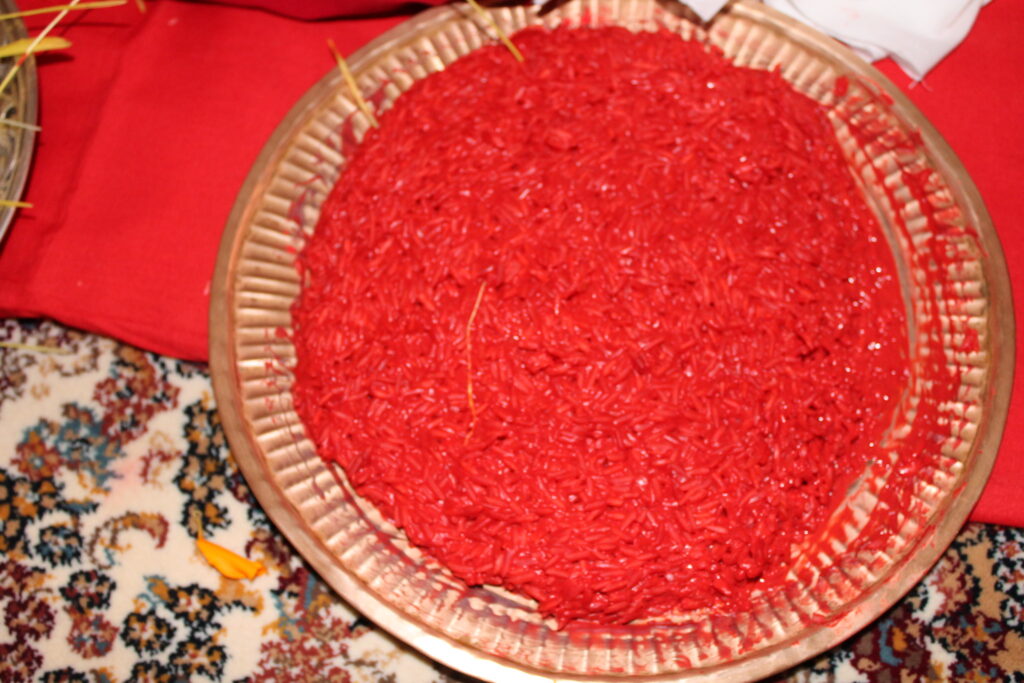
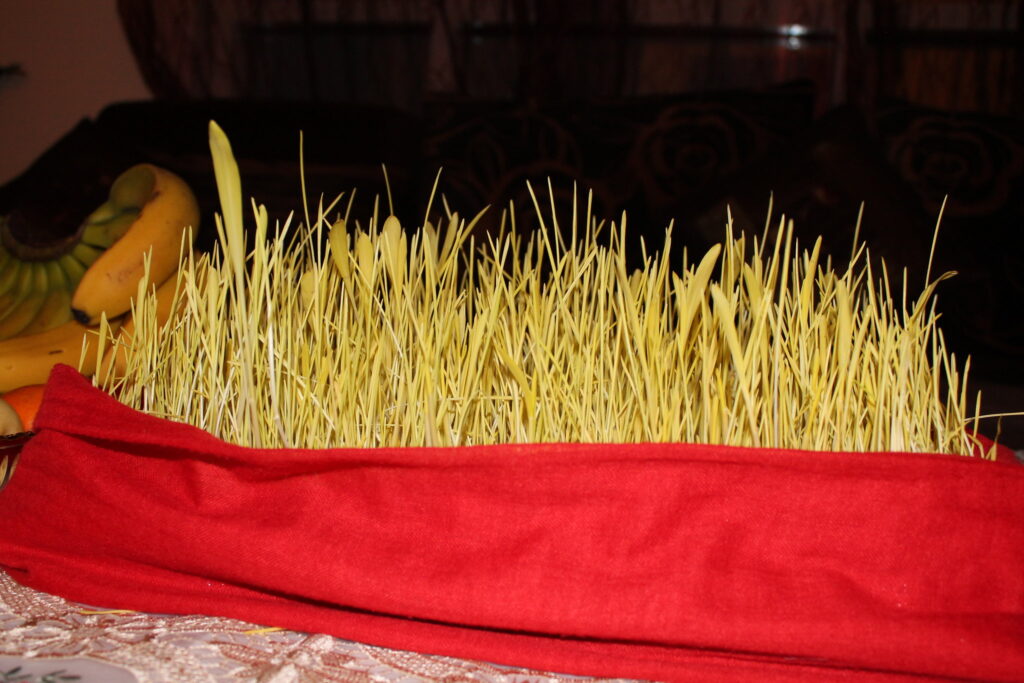
2. Visiting Temples of Durga and Her Incarnations
Ritual: During Dashain, devotees visit temples dedicated to Durga, Kali, and other forms of the goddess, offering sacrifices and prayers. Temples like Dakshinkali, Mahakali Temple, and Kalika Bhagwati see large crowds seeking blessings for protection and success.
Significance: Visiting temples symbolizes the devotees’ acknowledgment of Durga’s divine power. The sacrifices are a ritual echo of her triumph over Mahishasura.
3. Animal Sacrifices
Ritual: Animal sacrifices, especially on Maha Ashtami and Maha Navami, symbolize offerings to Durga. Goats, buffaloes, and chickens are sacrificed in temples to appease the goddess.
Significance: The sacrifices recall Durga’s defeat of the buffalo-headed demon, Mahishasura, symbolizing the end of evil forces.
4. Astra Puja (Worship of Tools and Vehicles)
Ritual: On Maha Navami, housewoners, businesses, and the military camps perform Astra Puja, where they worship their tools, weapons, and vehicles. Whether it’s agricultural tools, kitchen utensils, or modern machinery, the idea is to show respect to the instruments that contribute to success and livelihood. In Nepal’s army, even rifles, Bullets, Gunes and artillery are blessed.
Significance: This tradition stems from the myth that weapons were worshipped by the gods before Durga entered battle against Mahishasura. The ritual is believed to grant strength and success in all actions and endeavors, much like how Durga used divine weapons in her victory.
5. Kite Flying and Ping Games
Ritual: Kite flying and traditional Ping games are enjoyed during Dashain, symbolizing freedom and celebration.
Significance: These activities represent the arrival of autumn and the end of the rainy season, signifying freedom from past troubles.
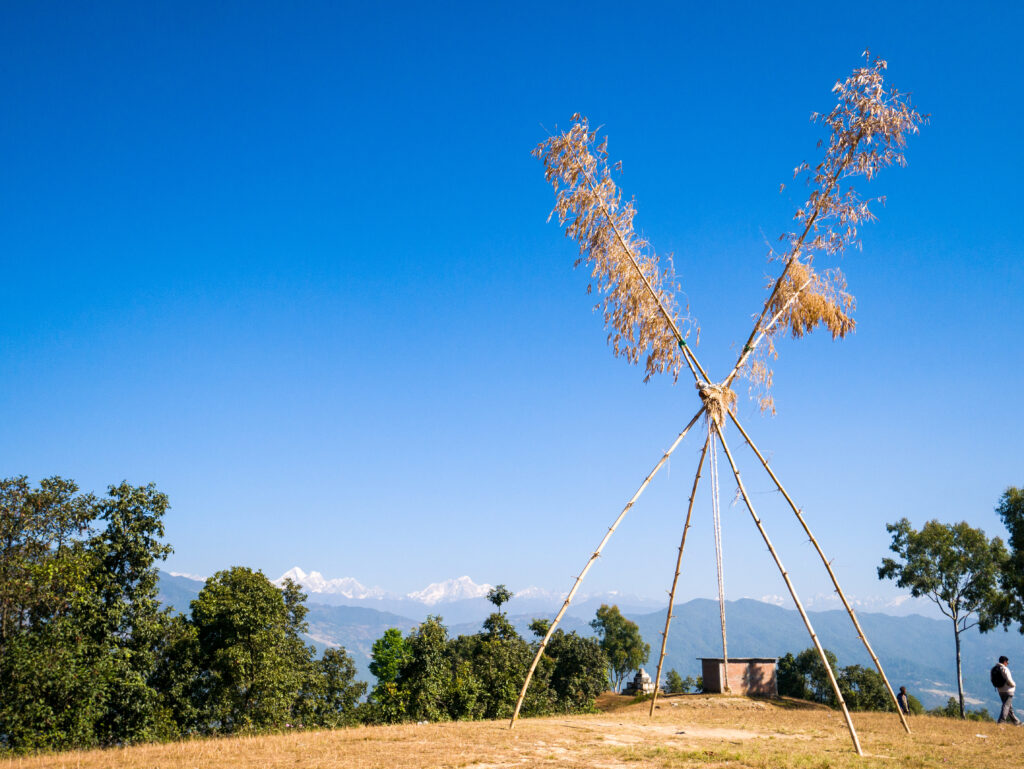
6. Family Reunions and Feasts
Dashain is a time for family gatherings, with people returning to their ancestral homes, sometimes traveling long distances. Schools and businesses close for several days, allowing people to celebrate with their families. Large feasts are prepared, with special emphasis on meat dishes like goat curry (khashi ko masu), buffalo meat, and other delicacies. Sel roti (a type of homemade rice doughnut) is commonly made and enjoyed.
Significance: This tradition of reuniting with family is one of the central aspects of Dashain. It symbolizes unity, love, and the bond shared between family members. The act of visiting elders and receiving tika reinforces the sense of familial respect and continuity, a core value in Nepali culture.
Symbolism of the 15 Days
The 15 days of Dashain symbolize the buildup of divine power and the eventual victory of good over evil. Each day serves as a reminder that success requires patience, sacrifice, and faith, just as Durga’s victory was earned through perseverance.
Special Dishes During The Dashain Festivals
During the Dashain festival in Nepal, families come together to celebrate and feast on special dishes that hold cultural significance. Here are some of the special dishes enjoyed during Dashain:
Mutton Curry: A popular dish made by cooking tender mutton pieces in a flavorful curry sauce, often served with Dhal Bhat or roti/Bread.
Sel Roti: A traditional Nepali sweet bread made by frying a batter of rice flour, sugar, and cardamom in a ring shape. It is often served as a snack or dessert during Dashain.
Goat Meat “Khasi ko Masu”: Another must-have dish during Dashain is the spicy mutton curry, cooked with a blend of traditional Nepali spices. It is often served with rice or roti.
Alu Tama: A unique dish made with bamboo shoots, potato, and black-eyed peas cooked in a tangy and spicy gravy. It is a flavorful and nutritious dish often enjoyed during Dashain.
Kheer: A traditional Nepali rice pudding made with milk, sugar, and cardamom, often garnished with nuts and dried fruits. It is a popular dessert served during Dashain.
Chiura: Beaten rice or flattened rice is a staple food in Nepal and is often enjoyed during Dashain. It can be eaten as is or mixed with various spices, vegetables, and meats.
These dishes add to the festive atmosphere of Dashain as families come together to indulge in delicious food and create lasting memories. Whether it’s a traditional mutton curry or a sweet and fragrant rice pudding, the special dishes during Dashain are a key component of the celebration.
Traveling During Dashain
Dashain transforms the streets of Kathmandu and other major cities in Nepal into quiet, almost empty spaces as people travel to their ancestral villages for celebrations.
As the festive season approaches, the bus is the preferred means of transportation for many, especially families getting ready for the annual visit to their villages.
The busy and crowded highways out of Kathmandu paint a clear picture of the excitement and anticipation for the upcoming Dashain celebrations. Buses are packed and passengers are eagerly waiting to reunite with their family members. Flights to key destinations are fully booked weeks ahead of time, showcasing the widespread enthusiasm for the holiday festivities.
Dashain is a special time to reconnect with loved ones and make memories with family and friends. The whole country is filled with festive decorations and the sound of laughter and music. The sense of togetherness is evident as people gather to celebrate this important festival. During Dashain, people also take the time to reflect on the importance of family and community, and to express gratitude for the blessings in their lives. It is a time for forgiveness and reconciliation, as people seek to mend any rifts or misunderstandings that may have arisen throughout the year.
At the end of the festival, people are hopeful for the coming year. They go back to their everyday lives feeling refreshed and committed to their family and community. Dashain is a joyful and meaningful part of Nepal’s culture.
Recent Highway Damages Due to Continuous Rainfall and Flood
This year’s Dashain season has been affected by heavy rainfall that has caused flooding in some parts of the country, leading to damages to highways and other infrastructure. One such area that has been affected is the Roshi River, which has overflowed its banks and caused significant damage to the highway connecting Kathmandu to the Kavrepalanchok district. The highway has been completely affected by the flooding, leaving travelers stranded and unable to reach their destinations.
The recent rainfall has also caused landslides in some areas, further complicating travel plans for those hoping to visit their villages during Dashain. This has led to long delays on the highways and increased traffic congestion as vehicles are rerouted to alternative routes. The damages to the roads have also made travel more hazardous, with increased risks of accidents and delays as repair work is carried out to restore the highways to their original condition.
Despite these challenges, the spirit of Dashain continues to prevail as families come together to celebrate this important festival. The sense of unity and togetherness that comes with Dashain is evident as people make the effort to overcome adversity and reach their loved ones, no matter the obstacles in their way. The streets of Kathmandu may be empty, but the hearts of the people are full of joy and anticipation as they set off on their journeys to celebrate Dashain with their families.
As we navigate through these challenges and uncertainties, it is important to remember the true meaning of Dashain – a time to come together with loved ones, to celebrate, and to reflect on the blessings in our lives. Despite the difficulties posed by the recent rainfall and highway damages, the spirit of Dashain shines through, reminding us of the importance
Experiencing Dashain with Namaste Nepal Trekking & Research Hub
We, Namaste Nepal Trekking & Research Hub offer an authentic and unforgettable experience of Dashain, the biggest and most important festival in Nepal. Dashain is a time of joy, celebration, and family reunions as Nepali people come together to honor the goddess Durga and seek her blessings for prosperity and happiness.
In Dashain, we design fun trips for tourists to learn about Nepal’s culture. They can join prayers, eat festive food, and have a great time.
Join us for Dashain celebrations to observe the traditional tika ceremony, and Visit Durga Temples that highlight the colorful customs of Nepal. Guests can participate in guided tours and treks to see the natural beauty of Nepal, including some of the most stunning Himalayan views in the world.
For travelers seeking to have a meaningful impact on their journey, Namaste Nepal Trekking & Research Hub is the perfect partner. We are deeply committed to supporting a variety of community projects that aim to uplift and empower local Nepali communities. By getting involved in these initiatives, guests have the chance to give back to the country that has embraced them so warmly.
For booking your Dashain adventure with Namaste Nepal Trekking & Research Hub, get in touch with us using the contact details below:
Phone/WhatsApp Number: +977-9843294000
Email Address: [email protected]
Don’t skip this unique chance to enjoy Dashain in Nepal with Namaste Nepal Trekking & Research Hub. Reserve your vacation now and start an adventure that will give you wonderful memories and a deeper understanding of Nepali culture and traditions.
Conclusion
To wrap it up, the Dashain festival is a time for cultural celebrations, family gatherings, and building stronger connections with loved ones. It teaches us to conquer inner struggles and embrace positivity. Reflecting on the festival reminds us of the values of forgiveness, compassion, and gratitude. It’s a chance to let go of past issues and start anew with hope.
During Dashain, we think about our blessings and show gratitude for the good things in our lives. We appreciate the support of our loved ones and cultural roots. As Dashain comes to an end, let’s continue the spirit of friendship, love, and generosity. Let’s work towards overcoming negativity, promoting positivity, and spreading happiness and kindness.
May the blessings of the goddess Durga be with us as we begin our journey through life, and may the spirit of Dashain lead us in our pursuit of happiness, peace, and success. Happy Dashain to all!
FAQs about the Dashain Festival
1. What is Dashain?
Dashain is the biggest and most important festival in Nepal, celebrating the victory of the goddess Durga over evil forces.
2. How do Nepali people celebrate Dashain?
Nepali people celebrate Dashain by gathering with family, receiving blessings from elders, and participating in various cultural rituals and traditions.
3. What does the tika ceremony involve?
The tika ceremony involves receiving a red vermilion mark on the forehead from elders as a blessing for happiness and prosperity.
4. What are some of the festive foods eaten during Dashain?
During Dashain, people enjoy delicious dishes such as goat meat, rice, lentils, and various sweets and snacks.
5. What is the significance of kite flying during Dashain?
Kite flying during Dashain symbolizes the victory of good over evil and is a fun and colorful tradition enjoyed by people of all ages.
6. When is Dashain in 2082 in Nepal?
Dashain in 2082 B.S. falls from Ashwin 5 to Ashwin 20, which is September 22 to October 6, 2025.
7. When is the Dashain festival Celebrating in 2025 in Nepal?
Dashain in 2025 is from September 22 to October 6.
8. Which month is October in the Nepali calendar?
October mostly falls in Ashwin and partly in Kartik in the Nepali calendar.
9. What is the name of the 15 days of Dashain?
The 15 days of Dashain are called Bada Dashain or Durga Paksha.
10. What are the 10 days of Dashain?
The 10 main days of Dashain are:
- Ghatasthapana (Day 1)
- Dwandwa Darshan (Day 2)
- Tritiya (Day 3)
- Chaturthi (Day 4)
- Panchami (Day 5)
- Shashthi (Day 6)
- Saptami (Phulpati) (Day 7)
- Ashtami (Maha Ashtami) (Day 8)
- Navami (Maha Navami) (Day 9)
- Dashami (Vijaya Dashami) (Day 10)
11. What can tourists expect when celebrating Dashain with Namaste Nepal Trekking & Research Hub?
Tourists can expect an authentic and immersive experience of Dashain, including guided tours, cultural activities, and the opportunity to participate in community projects.
12. How can tourists make a positive impact through their Dashain celebrations?
Tourists can make a positive impact by getting involved in community projects supported by Namaste Nepal Trekking & Research Hub, contributing to the well-being of local Nepali communities.
13. What types of guided tours and treks are available during Dashain celebrations?
Guests can choose from a variety of guided tours and treks to explore the natural beauty and cultural heritage of Nepal, including options for all levels of experience and fitness.
14. How can tourists participate in the Dashain celebrations with Namaste Nepal Trekking & Research Hub?
Join our Dashain celebrations with Namaste Nepal Trekking & Research Hub’s Dashain tour package, featuring cultural activities, guided tours, and community projects. Immerse yourself in Nepali culture and make a positive impact on the communities we support.
15. What kind of cultural activities can tourists expect during the Dashain celebrations with us?
Tourists can expect to participate in traditional rituals, ceremonies, Visiting Durga Temples and cultural performances such as music and dance showcasing the vibrant culture of Nepal during Dashain celebrations with Namaste Nepal Trekking & Research Hub.
16. Are there options for volunteering or giving back to the local community during Dashain celebrations with Namaste Nepal Trekking & Research Hub?
Yes, you will have the opportunity to participate in community projects such as volunteering at local schools, orphanages, or environmental conservation initiatives to give back to the local communities and make a positive impact during their Dashain celebrations with Namaste Nepal Trekking & Research Hub.
17. What kind of accommodations are provided for tourists during their stay while celebrating Dashain with Namaste Nepal Trekking & Research Hub?
Tourists can expect to stay in a local Homestay with the host family during their stay while celebrating Dashain with Namaste Nepal Trekking & Research Hub.
18. How I learn more about the culture and traditions of Nepal while celebrating Dashain with Namaste Nepal Trekking & Research Hub?
Tourists can engage in interactive cultural experiences such as cooking classes, traditional craft workshops, and visits to historic sites to learn more about the rich culture and traditions of Nepal while celebrating Dashain with Namaste Nepal Trekking & Research Hub.



